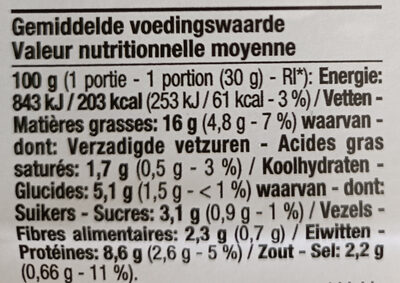Saucisson nature Veggie - boni - 9 tranches
This product page is not complete. You can help to complete it by editing it and adding more data from the photos we have, or by taking more photos using the app for Android or iPhone/iPad. Thank you!
×
Barcode: 5400141601329 (EAN / EAN-13)
Quantity: 9 tranches
Packaging: fr:conditionnement en plastique
Brands: Boni
Categories: Meat alternatives, Meat analogues, Prepared meat cuts substitutes
Labels, certifications, awards: Nutriscore
Origin of ingredients: Belgium
Countries where sold: Belgium
Matching with your preferences
Environment
Packaging
Transportation
Report a problem
Data sources
Product added on by openfoodfacts-contributors
Last edit of product page on by moon-rabbit.
Product page also edited by off.4b3f6687-3c0d-44fa-8b46-fb445e3c54a7, roboto-app.
If the data is incomplete or incorrect, you can complete or correct it by editing this page.











